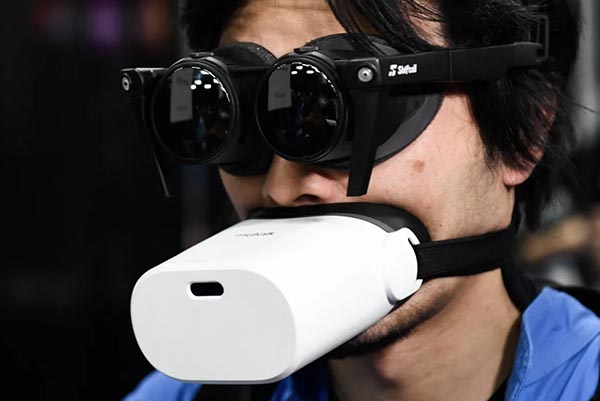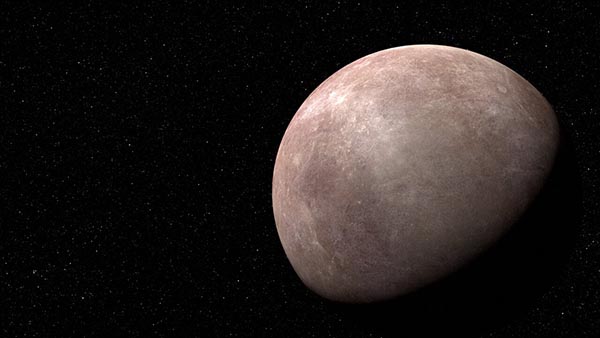AI-Yi-Yi, Part the Infinity: Are The Robots Coming for Creatives?
Artificial intelligence (AI) has entered the cultural zeitgeist and it seems that there is no aspect of human life that will be immune to whatever its effects are ultimately going to be. As we find more AI-written articles and AI-generated imagery turning up, Print magazine asks, “How Worried Should Creative Professionals Be About Artificial Intelligence?”
Traditional illustrators aren’t wasting any time. On December 22, 2022, the Society of Illustrators posted a message on Facebook, Instagram, and Twitter:
The Society of Illustrators celebrates the hard work and dedication that goes into each artist’s creations. We oppose the commercial use of Artificially manufactured images and will not allow AI into our annual competitions at all levels.
AI was trained using copyrighted images. We will oppose any attempts to weaken copyright protections, as that is the cornerstone of the illustration community.
“The sudden availability of artificially designed images creates a moral challenge to the illustration community and to the broader design community,” [Society of Illustrators President Tim O’Brien] said. “We are at the critical point at which illustrators and designers must value human interaction and reject the output of AI image generators. The inclusion of a credit highlighting an AI generator should bring on a sense of shame.”
The problem isn’t so much that AI is taking work away from humans, but that at present, AI is taking work fromhumans.
“AI can generate interesting and elaborate imagery, but there are many problems from a legal and moral point of view,” [Michael Mrak, the creative director of Scientific American] continued. “AI-generated art cannot be copyrighted and therefore has potential legal issues attached to it, a principal one being that it uses art from across the internet to make the final image. That, and the fact that it scraped or pulled copyrighted art into its learning algorithm.”
At present, SA has no desire to replace its human illustrators with AI.
But this is not an issue that is going to go away.
[Martin Schwimmer, a partner at top-rated New York intellectual property law firm LeasonEllis] said that he views AI models as one more tool that helps users generate content. “The copyright analysis will be comparable to the analysis we use today when artists use the various illustration tools, graphics editors, paint programs, and other digital art tools: Is the work sufficiently original when divorced from the accompanying tools?”
And it’s not just about images. As Heidi Tolliver-Walker has written (or at least we assume it was Heidi), AI can and has been used to write articles. So AI will have interesting implications for all sorts of intellectual property. Wait until it starts making movies.
—WTT Writing Unit #816
Signs of the Times: Sticker Shock
As a rule, we are not fans of messing around with street signs. After all, they are intended to provide directions or promote traffic safety. If you find yourself in Florence, Italy (and there are worse place you could find yourself), you may find yourself getting acquainted with street artist Clet Abraham, who alters street signs, but in a more whimsical way that doesn’t negatively impact the message the sign was designed to convey. (Plus he uses easily removable stickers.) Says Artspur (via Boing Boing):
He redirects traffic signs in order to create unique work with bright colors, marked with a hint of humor. His work is based on criticizing the strictness of signage, therefore he gives these signs a more humanistic dimension which symbolize rules and regulations. It is in Florence that he began this redirection, he cuts stickers in advance and sticks them on panels in Italian streets and cities.
He’s been fined by authorities numerous times. He distinguishes between what he does and vandalism (“artists create, vandals destroy”).
Check out this video profile:
Gadgets Galore
The Consumer Electronics Show (CES) was held last week, and last week’s Around the Web included some notable products that were demoed or at least introduced. This week, CNet had a roundup of what it considers to be some of the more dystopian products on display at CES.
This year’s CES included some products that at first glance feel more creepy than cool. Like an exercise bike built into a work desk to power your computer, or a device that covers your mouth in the real world while you’re chatting on a conference call or playing a game. Perhaps most eyebrow-raising was a sensor for your toilet bowl, meant to analyze your pee. And while the ever expanding push of cameras into our lives means people can now livestream their own Great British Bake Off-style moments from their oven, there's the very real question of how many internet-connected cameras are too many, and which companies we can trust with access to them.
Now, it’s one thing to read a description like “a device that covers your mouth in the real world while you’re chatting on a conference call or playing a game” and quite another to see what they mean.

Um, no.
And while the Withings U-Scan toilet attachment sensor is a more convenient alternative to peeing in testing cups for the myriad medical procedures that seem to increase every year after age 50, it does raise questions of privacy. Do we trust tech companies with such private data?
On the other hand, the eKinekt BD 3 bike desk doesn’t seem like an awful idea—as you pedal, it charges a battery into which your devices can be plugged. Sustainable and reasonably healthy, but to be honest we’d rather go to the gym or run outside and get away from the desk for at least a short period.

By way, CNet has apparently been stealthily publishing AI-written articles.
Subordinate Clauses
The Federal Trade Commission (FTC) has proposed a new rule that would ban companies from requiring that employees sign noncompete agreements. Says CNBC:
As a result, the impact will be felt by companies with employees who are governed by noncompetes as well as companies looking to hire workers who are bound by noncompetes, said Benjamin Dryden, a partner at Foley & Lardner in Washington, D.C., who specializes in antitrust issues relating to labor and employment.
“This regulation will affect, more or less, every business in the country,” he said.
…“Noncompetes block workers from freely switching jobs, depriving them of higher wages and better working conditions, and depriving businesses of a talent pool that they need to build and expand,” FTC Chair Lina Khan said in a statement.
And noncompetes are far more common than one would think.
One report from the White House and U.S. Department of the Treasury found that 15% of workers without a college degree are subject to noncompete agreements, as are 14% of workers earning less than $40,000.
Expect some degree of pushback. The FTC is soliciting comments from workers impacted by noncompetes. The comment period is open through March 10.
Graphene’s Cousin
Was it a good week for graphene news? It’s always a good week for graphene news! Take note, Cary: researchers have found a “cousin” to graphene, which they have dubbed “graphullerene.” Says (who else?) Graphene-Info:
The material is a new 2D form of carbon made up of layers of linked fullerenes peeled into ultrathin thin flakes from a larger graphullerite crystal—similarly to the way graphene is peeled from crystals of graphite.
“It is amazing to find a new form of carbon in the year 2022,” said Columbia University’s Colin Nuckolls. “It also makes you realize that there is a whole family of materials that can be made in a similar way that will have new and unusual properties as a consequence of the information written into the superatomic building blocks.”
It has some important differences from graphene.
Unlike graphene and most other two-dimensional materials that are made of repeating elements that are limited to specific bonding geometries and have specific properties as a result, graphullerene’s superatomic structure makes it incredibly modular, she explained. With 60 carbon atoms in the ball to work with, fullerenes can theoretically be linked together in a number of different ways, each of which could yield different electronic, magnetic, and optical properties—this first version represents just one possible configuration, according to the team.
We’re now off to the races in discovering what may be possible with this new material. Stay tuned!
KNight Rider
A little rebranding is a dangerous thing, as Kia could probably tell you. Via Core77, in 2021, Kia decided to rebrand itself, changing what was a pretty legible logo:

Into one that was a bit more confusing:

“Despite being aesthetically pleasing, our survey has found that most people are unable to recognize the letters in the new KIA logo,” writes automotive brand experts Rerev. This comes nearly two years after the new logo has been in circulation. All told, just 56% of the 1,062 survey participants nailed it, while 44% could not correctly identify the letters. Furthermore, 26% of respondents guessed it says “KN”—which results in roughly 30,000 online searches for “KN car” a month, according to Rerev.
Maybe AI designed it.
Street Housle
The Wordle rage appears to have come and gone, but new variants keep emerging. The latest is Housle, a game that asks you to guess the list price of a house for sale (within 5% of the listing). You get six tries.

We are fairly clueless when it comes to real estate, but it gives you various hints. It took us five tries.

Not sure what the owners think…
Jazzin’ for New Genes
Are you getting on in years? And are you a mouse? If yes to both, then good news! San Diego-based biotech startup Rejuvenate Bio has claimed they gene hacked mice to double their remaining lifespan. (Would the lead researcher on this be called a gene hackman?) Exciting if true, especially if you’re a mouse. Says Neoscope:
According to a yet-to-be-peer-reviewed paper, scientists at the company say an injection that reprograms genes in the bodies of senior mice effectively doubled their remaining life span, MIT Technology Reviewreports.
In tests, the company found that treated mice lived on for another 18 weeks on average. Those who were not treated in a control group only lived for another nine weeks. Overall, they say, the gene hacked mice lived roughly seven percent longer overall.
The treatment works by exposing the mice's cells to various proteins that are usually found in early-stage embryos, altering their genetic properties. Japanese biologist Shinya Yamanaka came up with this technique in 2012, which earned him a Nobel Prize.
Naturally, other researchers will need to carefully examine the results before they can say that there are no adverse effects, or that it will work in non-elderly mice—or that it actually works at all.
The company is working on similar therapies for both pet dogs and humans suffering from specific medical conditions including heart failure.
Who Moved My Cheese?
In other exciting mouse news this week, researchers have found ways that mice can recover lost memories. (If one of those memories is how they got into the attic, this is not great news.) Says Science Alert:
A new study in mice suggests that “forgotten” memories can be recovered days later, by activating select brain cells or with a drug typically used in humans to treat chronic obstructive pulmonary disease (COPD), a group of diseases affecting the lungs and airways, including emphysema, chronic bronchitis, and asthma.
That might seem bonkers, but not so much when you think about how memories are somehow chemically encoded in brain cells.
The article is quick to add that no one is under any illusions that this could be replicated in humans, but the study did reveal some intriguing findings about new memories.
Past research has shown how even brief periods of sleep deprivation affect memory processes, altering protein levels and brain cell structure. But researchers were still unsure whether sleep loss impairs how information is stored, making it difficult to access later, or if newly formed memories are lost altogether when we haven’t slept.
So they deprived mice of sleep and found that they did indeed have impaired memories. But the lost memories could be recovered by activating certain neurons in the hippocampus, the part of the brain that stores spatial information and consolidates memories. But:
the technique used to do this, optogenetics, is an experimental approach that requires a genetic tweak (to make cells light-sensitive) and as such, is still a long way from being used in humans.
On the other hand, a similar effect was achieved by giving mice a COPD drug called roflumilast. “Among the pharmaceutical’s varied effects is a boost to levels of a specific cell signaling molecule that becomes diminished when memory is impaired due to sleep loss.”
So, all in all, good news this week if you are an aging mouse with memory problems.
Around the Webb, Part the Continuing: A Whole New World
The James Webb Space Telescope is up and running, and recently turned its highly sensitive eyes to its first exoplanet, a planet that orbits a star other than the Sun. Officially named, LHS 475 b is relatively close to us—only 41 light-years away—in the constellation Octans. It was captured by Webb’s Near-Infrared Spectrograph (NIRSpec) which means that it wasn’t a “photograph” per se. Illustrations were created based on the NIRSpec data:

Based on new evidence from the NASA/ESA/CSA James Webb Space Telescope, this illustration shows the exoplanet LHS 475 b. It is rocky and almost precisely the same size as Earth. The planet whips around its star in just two days, far faster than any planet in the Solar System. Researchers will follow up this summer with additional observations with Webb, which they hope will allow them to definitively conclude if the planet has an atmosphere. LHS 475 b is relatively close, 41 light-years away, in the constellation Octans. Credit: NASA, ESA, CSA, L. Hustak (STScI).
…The researchers’ findings have opened up the possibility of pinpointing Earth-sized planets orbiting smaller red dwarf stars. “This rocky planet confirmation highlights the precision of the mission’s instruments,” Stevenson said.“And it is only the first of many discoveries that it will make.” Lustig-Yaeger agreed: “With this telescope, rocky exoplanets are the new frontier.”
The things we can do.
Stay Can’t Stand Pat
On January 15, 1919, a large storage tank owned by the Purity Distilling Company in Boston, Mass., containing 2.3 million gallons of molasses, burst. A wave of molasses oozed through the streets at an estimated 35 mph, killing 21 and injuring 150. The Great Molasses Flood subsequently entered local folklore.
We were reminded of this early 20th-century disaster when we read over at Food & Wine about a Wisconsin dairy factory fire that sent a stream of melted butter into a nearby canal.
“The fire started in a room where butter was being stored, and as it was heated, it began to flow throughout the structure,” the Portage Fire Department wrote. “The butter runoff and heavy smoke slowed access to the structure. After multiple hours with many crews, the fire was contained and extinguished before it could spread past the firewalls and throughout the building.”
The sheer volume of melted butter flowing through the building proved to be one of the biggest challenges fire crews faced.
“When we first tried to go up the stairs to that part that collapsed, this stuff, the butter was running down like three inches thick on the steps, so our guys were up to their knees trying to go up the steps to get to the top and they’re trying to drag the hose line, the hose line got so full of butter they couldn’t hang onto it anymore,” Portage Fire Department chief Troy Haase told WMTV.
Butter also flowed into storm sewers and eventually clogged the Portage Canal as if it were one’s arteries. One firefighter was probably not heard to remark, “I can’t believe it’s butter.”
Oh, My Stars!
Do you like pasta stars? Sold by Ronzoni? If yes, then bad news! Ronzoni has announced that it is discontinuing its star-shaped Ronzoni Pastina. Says Food & Wine:
According to the company, its long-term supplier would no longer make the pasta as of January 2023.
They don’t make their own pasta? Well, that’s disappointing. But not as disappointing as Pastina’s apparently many fans find the discontinuing.
But it’s not just on Instagram. Fans also took to Petitions.net to plead with the brand to reverse course.
“Pastina is a huge part of our Italian Culture,” the petition description reads. “Many of us were raised on Pastina and include it in our Italian recipes. We [...] do hereby request that Ronzoni continue to offer pastina in the future.” As of publication time, some 12,000 people have agreed, sharing the petition on their Facebook pages. There are also two similar petitions on Change.org, also encouraging the Post Holdings-owned pasta brand to reconsider its decision to discontinue the pasta.
Apparently, says Ronzoni, the existing supply of Pastina “will be fully depleted by January/February.”
We hasten to point out that Prince (the pasta company not the musician) still sells its own Pastina. You’re welcome.
Did anything catch your eye “around the Web” this week? Let us know at [email protected].
This Week in Printing, Publishing, and Media History
January 9
1606: English printer William Dugard born.
1890: Czech author and playwright Karel ?apek born. His play R.U.R. coined the word “robot.”
1944: English guitarist, songwriter, and producer Jimmy Page born.
January 10
1754: English publisher, founder of The Gentleman’s Magazine Edward Cave dies (b. 1691).
1776: Thomas Paine publishes his pamphlet Common Sense.
1927: Fritz Lang’s futuristic film Metropolis is released in Germany.
1990: Time Warner is formed by the merger of Time Inc. and Warner Communications.
January 11
1927: Louis B. Mayer, head of film studio Metro-Goldwyn-Mayer (MGM), announces the creation of the Academy of Motion Picture Arts and Sciences, at a banquet in Los Angeles, California.
1928: English novelist and poet Thomas Hardy dies (b. 1840).
1949: The first “networked” television broadcasts took place as KDKA-TV in Pittsburgh, Pa., goes on the air connecting the east coast and mid-west programming.
1964: Surgeon General of the United States Dr. Luther Terry, M.D., publishes the landmark report Smoking and Health: Report of the Advisory Committee to the Surgeon General of the United States saying that smoking may be hazardous to health, sparking national and worldwide anti-smoking efforts.
1755: General, economist, and politician, 1st United States Secretary of the Treasury, “Ten-Dollar Founding Father” Alexander Hamilton born.
1807: American businessman and philanthropist, founder of Western Union and Cornell University Ezra Cornell born.
January 12
1908: A long-distance radio message is sent from the Eiffel Tower for the first time.
1949: Japanese novelist, short-story writer, and essayist Haruki Murakami born.
1976: English crime novelist, short story writer, and playwright Agatha Christie dies (b. 1890). Whodunnit?
January 13
1888: The National Geographic Society is founded in Washington, D.C.
1898: Émile Zola’s J’accuse…! exposes the Dreyfus affair.
1910: The first public radio broadcast takes place; a live performance of the operas Cavalleria rusticana and Pagliacciare sent out over the airwaves from the Metropolitan Opera House in New York.
1941: Irish novelist, short story writer, and poet James Joyce dies (b. 1882).
2009: Irish-American actor, director, and producer Patrick McGoohan dies (b. 1928). Be seeing you.
January 14
1896: American novelist, poet, essayist, and playwright John Dos Passos born.
1898: English novelist, poet, and mathematician Lewis Carroll (né Charles Dodgson) dies (b. 1832).
1952: NBC’s long-running morning news program Today debuts, with host Dave Garroway.
1967: The Human Be-In takes place in San Francisco, California’s Golden Gate Park, launching the Summer of Love.
1973: Elvis Presley’s concert Aloha from Hawaii is broadcast live via satellite, and sets the record as the most watched broadcast by an individual entertainer in television history.
January 15
1759: The British Museum opens.
1876: The first newspaper in Afrikaans, Die Afrikaanse Patriot, is published in Paarl.
1892: James Naismith publishes the rules of basketball.
1936: The first building to be completely covered in glass, built for the Owens-Illinois Glass Company, is completed in Toledo, Ohio.
1941: American singer-songwriter, musician, and artist Captain Beefheart (né Don Van Vliet) born.
1962: The Derveni papyrus, Europe’s oldest surviving manuscript dating to 340 BC, is found in northern Greece.
1967: The first Super Bowl is played in Los Angeles. The Green Bay Packers defeat the Kansas City Chiefs 35–10.
2001: Wikipedia, a free wiki content encyclopedia, debuts online.














